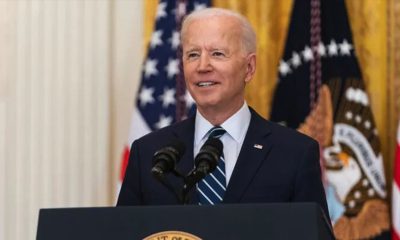Activism
OPINION: Sacramento Mass Shooting Confirms What Experts Already Knew, But Media Won’t Tell
A 2020 study done as a part of the RAND Corporation’s Gun Policy in America initiative, revealed that of the 27,900 research publications on the effectiveness of gun control laws, only 123 (0.4%) were found to meet a base level of academic rigor. They also noted that the only reliable conclusion one could get from those 123 studies was that there is zero evidence that gun control laws have any effect on violence in general or gun violence specifically.
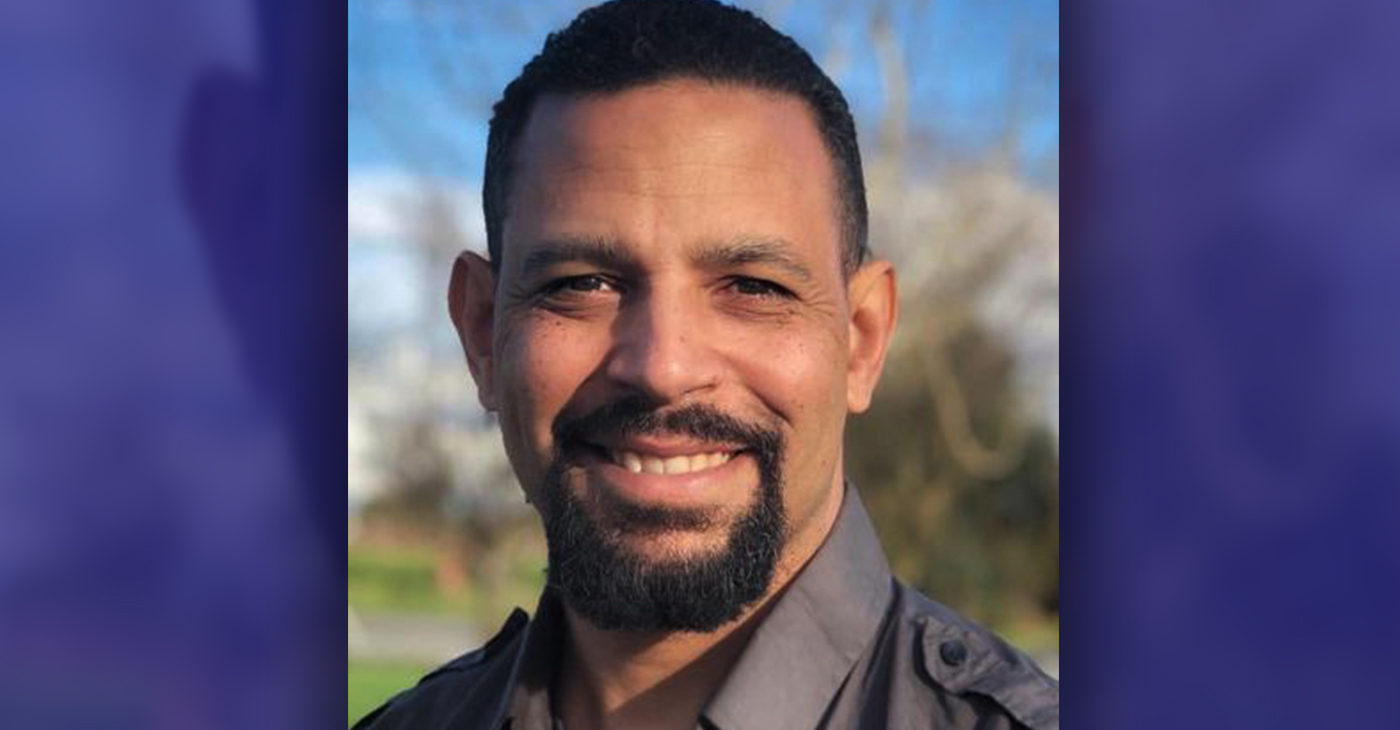
By Craig DeLuz, Special to California Black Media Partners
In the wake of the horrific mass shooting that took place in Sacramento, California, politicians and media pundits have rushed to their soapboxes to proclaim, once again, that guns are the root of all evil and the cause of the recent violent crime wave that has gripped our nation. They share with whoever will listen their prognosis for ending crime as we know it.
“We need more ‘common sense’ gun laws,” they say.
But there are a number of underlying truths that they will dare not share with the public. Because if they do, it will become clear that they and their policies are not the solution. They are, in fact, the root of the problem.
Here are just a few of those truths they will not dare share:
We do not have a gun violence problem. We have a violence problem.
Guns have been a part of the American lexicon since the very beginning. For generations, society had a healthy relationship with the Second Amendment. Firearms were given their proper respect as tools to be used to feed one’s family, defend one’s home or fight for one’s liberty.
It is only recent generations that have concluded that violence is an acceptable way to address the myriad issues confronting them. The firearm is not the cause of this. In fact, it is not even the weapon of choice.
While it is true that 77% of homicides in 2020 were committed with firearms, 92% of all violent crimes do not involve firearms. The overwhelming majority of violent offenses — including robberies, rapes and other sex crimes — almost always involve other weapons or no weapons at all. And there is no doubt that the number of instances of all these offenses are increasing.
Guns are no more the cause of this violence than cars are the cause of drunk driving.
Gun control does nothing to reduce crime in general, let alone violent crime.
There is a popular saying amongst statisticians, “There are lies, damn lies and then there are statistics.” Politicians and the media have been using all three to push their false narrative about gun control laws. They would have you believe that studies support the idea that the best way to reduce violent crime is to pass more gun laws. But nothing could be further from the truth.
A 2020 study done as a part of the RAND Corporation’s Gun Policy in America initiative, revealed that of the 27,900 research publications on the effectiveness of gun control laws, only 123 (0.4%) were found to meet a base level of academic rigor. They also noted that the only reliable conclusion one could get from those 123 studies was that there is zero evidence that gun control laws have any effect on violence in general or gun violence specifically.
The recent increase in violent crime is directly linked to “Smart on Crime” (read soft-on-crime) policies
Violent crime was at an all-time high in the early 1990s fueled by gangs and the drug trade. This led to federal, state and local initiatives aimed at stemming the tide. Tough-on-crime initiatives were enacted that included, among other things, increased policing and mandatory minimums for a number of crimes.
Crime (especially violent crime) would go on the decline for the next 20-plus years.
Then in the 2010s, several states began instituting “Smart on Crime” policies that decriminalized a number of criminal offenses and let violent criminals out of prison. That wasn’t the intention of those who supported these policies. But that is, in fact, what happened.
Case in point: Back in 2018 Smiley Martin was sentenced to 10 years in prison for punching a girlfriend, dragging her from her home by her hair and whipping her with a belt.
But, sadly, under California law, these are considered non-violent offenses, making Mr. Martin eligible for a reduced sentence under Proposition 57. So, instead of sitting in a jail cell serving the fifth year of a 10-year sentence, he was walking the streets of Sacramento with a modified automatic pistol.
This story is not the first. It is not even unique to Sacramento. Just a month earlier, three children and their chaperone were killed by their father who should have been in ICE custody. But under California’s Sanctuary State policy, David Mora Rojas, who was locked up for assaulting a highway patrol officer was released from police custody, was free to kill his children.
While the media and politicians deny the correlation and instead seek to blame guns; the increase in crime, especially violent crime, directly corresponds with the change in our criminal justice policies.
This is about race. But not in the way you think it is.
Gun control has always been about keeping “Those People” from being able to own firearms. Following the Civil War, Southern states enacted ‘Black Codes’ making it illegal for newly freed slaves to own guns. In the 1870s, California would pass laws preventing the sale of firearms and ammunition to Native Americans (then referred to as Indians.) In the 1920s, California acted again, prohibiting the sale of firearms to the “Chinese” or “Mexicans.” Then in the 1960s, California would pass the Mulford Act, eliminating the ability to openly carry loaded firearms in public as a way to disarm the Black Panther Party.
The truth is that the gun debate has always been rooted in racism. However, those who push these policies are the true victimizers.
Consider that the last gun case to be heard by the U. S. Supreme Court (McDonald v. Chicago) was brought by a Black man who simply wanted to be able to defend his home from the ravages of gang and drug violence. This underscores two very important, yet often overlooked truths:
- Policies that release habitual criminals into our neighborhoods lead to the victimization of people in those communities. These policies disproportionately impact people of color.
- Gun Control Laws only serve to restrict the ability of law-abiding citizens to own or possess firearms they may need to protect themselves and their loved ones. These laws also disproportionately affect people of color.
We are often told that young Black and Brown men are disproportionately impacted by gun violence. But it is rarely noted that young Black and Brown men are disproportionately the ones pulling the trigger. The sad fact is that people who seek to victimize others (Black, White, Latin, Asian, etc.) tend to go after people who look like them.
So, while it is noble to try and reduce the number of young Black men in our criminal justice system, we cannot ignore that in doing so, we have put Black men, women and children at risk of being their victims.
At the same time, we are limiting the ability of these very same folks to be able to defend themselves from the very danger we have put in their path.
To any objective observer, these truths are self-evident. Most of the media and political elite have proven themselves to be anything but objective observers. If we are to ever address the scourge of violence in our streets, it will only happen when we all come to grips with these and many other truths.
Craig DeLuz is president of 2ANews Corporation and hosts a daily news and political talk show “The Rundown.”
Activism
Oakland Post: Week of July 24 – 30, 2024
The printed Weekly Edition of the Oakland Post: Week of July 24 – 30, 2024
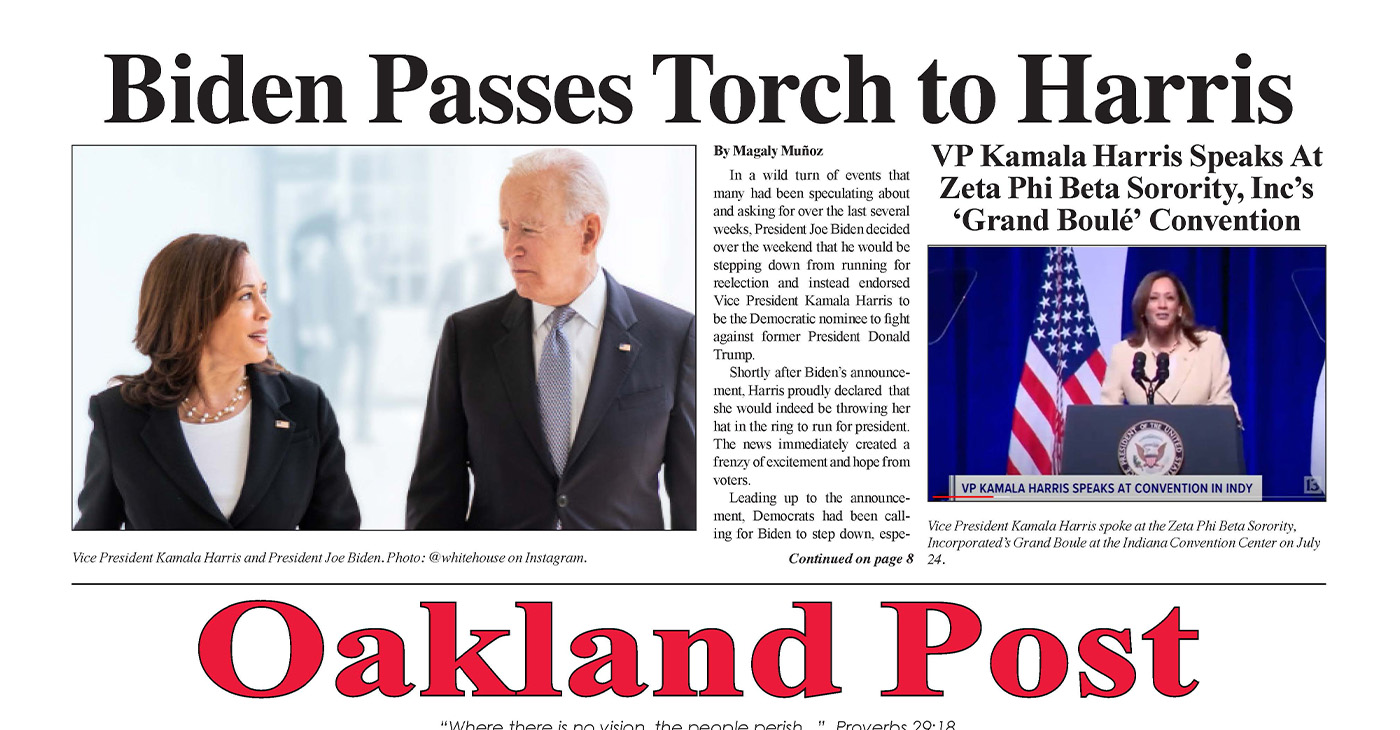
To enlarge your view of this issue, use the slider, magnifying glass icon or full page icon in the lower right corner of the browser window. ![]()
Activism
Oakland Post: Week of July 17 -23, 2024
The printed Weekly Edition of the Oakland Post: Week of July 17 -23, 2024

To enlarge your view of this issue, use the slider, magnifying glass icon or full page icon in the lower right corner of the browser window. ![]()
Activism
Community Celebrates Historic Oakland Billboard Agreements
We, the Oakland Billboard Economic Development Coalition, which includes Oakland’s six leading community health clinics, all ethnic chambers of commerce, and top community-based economic development organizations – celebrate the historic billboard agreements approved last year by the Oakland City Council. We have fought for this opportunity against the billboard monopoly, against Clear Channel, for five years. The agreements approved by Council set the bar for community benefits – nearly $70 Million over their lifetime, more than 23 times the total paid by all previous Clear Channel relocation agreements in Oakland combined.
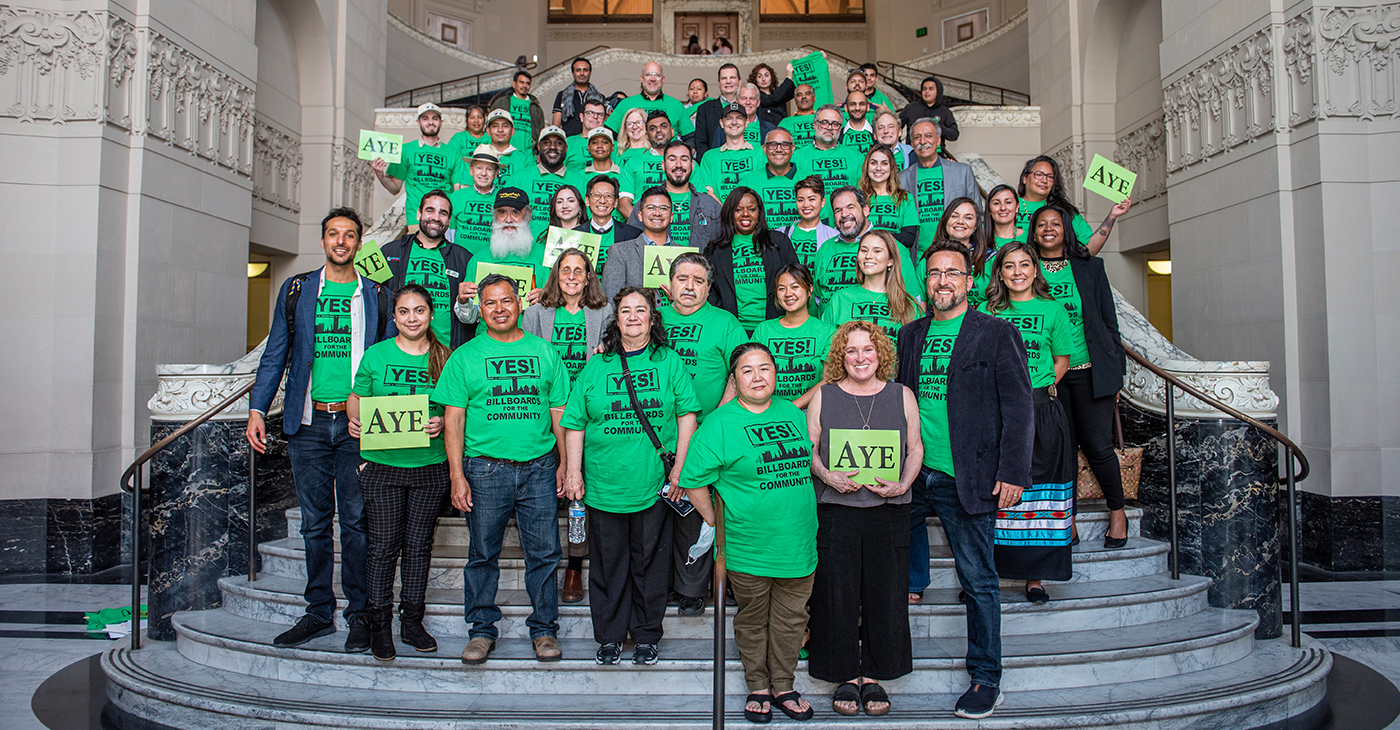
Grand Jury Report Incorrect – Council & Community Benefit
We, the Oakland Billboard Economic Development Coalition, which includes Oakland’s six leading community health clinics, all ethnic chambers of commerce, and top community-based economic development organizations – celebrate the historic billboard agreements approved last year by the Oakland City Council. We have fought for this opportunity against the billboard monopoly, against Clear Channel, for five years. The agreements approved by Council set the bar for community benefits – nearly $70 Million over their lifetime, more than 23 times the total paid by all previous Clear Channel relocation agreements in Oakland combined.
Unfortunately, a recent flawed Grand Jury report got it wrong, so we feel compelled to correct the record:
- Regarding the claim that the decision was made hastily, the report itself belies that claim. The process was five years in the making, with two and a half years from the first City Council hearing to the final vote. Along the way, as the report describes, there were multiple Planning Commission hearings, public stakeholder outreach meetings, a Council Committee meeting, and then a vote by the full Council. Not only was this not hasty, it had far more scrutiny than any of the previous relocation agreements approved by the City with Clear Channel, all of which provide 1/23 of the benefits of the Becker/OFI agreements approved by the Council.
- More importantly, the agreements will actually bring millions to the City and community, nearly $70M to be exact, 23 times the previous Clear Channel relocation agreements combined. They certainly will not cost the city money, especially since nothing would have been on the table at all if our Coalition had not been fighting for it. Right before the decisive City Council Committee hearing, in the final weeks before the full Council vote, there was a hastily submitted last-minute “proposal” by Clear Channel that was debunked as based on non-legal and non-economically viable sites, and relying entirely on the endorsement of a consultant that boasts Clear Channel as their biggest client and whose decisions map to Clear Channel’s monopolistic interests all over the country. Some City staff believed these unrealistic numbers based on false premises, and, since they only interviewed City staff, the Grand Jury report reiterated this misinformation, but it was just part of Clear Channel’s tried and true monopolistic practices of seeking to derail agreements that actually set the new standard for billboard community benefits. Furthermore, our proposals are not mutually exclusive – if Clear Channel’s proposal was real, why had they not brought it forward previously? Why have they not brought it forward since? Because it was not a real proposal – it was nothing but smoke and mirrors, as the Clear Channel’s former Vice President stated publicly at Council.
Speaking on behalf of the community health clinics that are the primary beneficiaries of the billboard funding, La Clinica de la Raza CEO Jane Garcia, states: “In this case, the City Council did the right thing – listening to the community that fought for five years to create this opportunity that is offering the City and community more than twenty times what previous billboard relocation agreements have offered.”
Oakland Billboard Economic Development Coalition
| Native American Health Center | La Clínica de la Raza | West Oakland Health Center |
| Asian Health Services | Oakland LGBTQ Center | Roots Community Health Center |
| The Unity Council | Black Cultural Zone | Visit Oakland |
| Oakland African American Chamber of Commerce | Oakland Chinatown Chamber of Commerce | Oakland Vietnamese Chamber of Commerce |
| Oakland Latino Chamber of Commerce | Building Trades of Alameda County | (partial list) |
-

 Arts and Culture3 weeks ago
Arts and Culture3 weeks agoRooted in Tradition: The Intricate History of Black Hair Braiding
-

 Bay Area4 weeks ago
Bay Area4 weeks ago“I Will Not Be Bullied,” Says Oakland Mayor Sheng Thao
-

 Bay Area2 weeks ago
Bay Area2 weeks agoPG&E Increases Rates While Bay Area Households Are Struggling to Stay Afloat
-

 Business3 weeks ago
Business3 weeks agoGov Newsom: Raising Fast Food Minimum Wage to $20 Pays Off as Jobs Multiply in Industry
-

 Activism4 weeks ago
Activism4 weeks agoOpponents of Mayor Sheng Thao Are Calling on Her to Resign Following FBI Raid
-
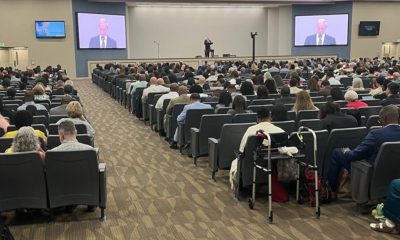
 Community1 week ago
Community1 week agoHundreds Come to Jehovah’s Witnesses’ Assembly Hall for Three-Day Program of ‘Good News’ in Fremont
-

 Bay Area2 weeks ago
Bay Area2 weeks agoJuneteenth Mass Shooting Suspect Charge with Multiple Counts of Felony Assault by Alameda County DA Pamela Price
-

 Activism4 weeks ago
Activism4 weeks agoOakland Coliseum Sale to AASEG: A Model for Community Development and Inclusion











